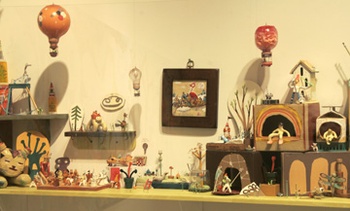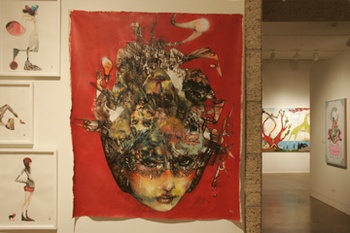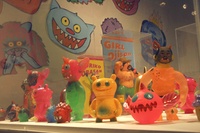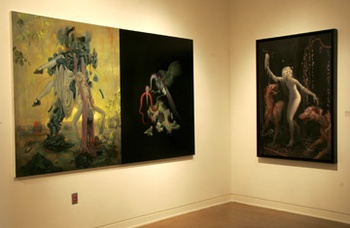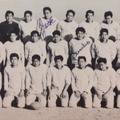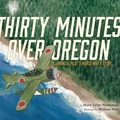In 1994, Eric Nakamura and co-founder Martin Wong put together the first issue of Giant Robot Magazine, then a photocopied publication, filled with Asian-inspired pop culture finds. Fifteen years later, Giant Robot has become a success story with shops in Los Angeles, San Francisco and New York—and an additional gallery and restaurant in L.A. Giant Robot has evolved to be more than a magazine or even a shop, but rather a culture, a lifestyle.
On October 24, 2009, following the successful 2007 exhibition Giant Robot Biennale: 50 Issues, the second Giant Robot Biennale opened at the Japanese American National Museum (JANM). The exhibition is very interactive in nature, and is complemented by a series of public programs including hands-on workshops, film screenings, and artist talks to further engage and excite the public. This makes sense considering that Giant Robot was originally started with the purpose of bringing art to regular people. “I think 15 years ago, art was much more inaccessible,” says editor Eric Nakamura. “It was in stuffy galleries and museums. Part of my work in art and with artists and with Giant Robot was to put it out there for a more general public.”
With this same philosophy, Giant Robot began bringing artists to its shops (starting in 2002 with Kozyndan and Ai Yamaguchi), incorporating art into the retail world. Nakamura says that he believes this is helping to make art more accessible for sure. “I like meeting people who say something like, ‘I bought my first piece of art at Giant Robot,’” he says. “It’s happened quite a lot.”
Giant Robot Biennale 2: 15 Years is certainly doing its part to bring contemporary art to a wider audience. In just two years, the show has grown into something that Nakamura believes is “much more cohesive and stronger” than the first Biennale in 2007. “Of course there are a bunch of things I’d like to do next time around,” he adds. “I do feel that JANM is definitely on the map for people who like art in this genre. I’ve received so much feedback from visitors after the exhibition began.”
Nakamura expresses thanks to the Museum staff, especially Clement Hanami, the Museum’s Art Director, who worked to bring about the vision of Giant Robot without the luxury of unlimited resources. “The JANM staff help is consistent, and the opening event was just as great,” he says.
As for the content of the exhibition, it captures the breadth of Nakamura’s vision for Giant Robot. The work displayed ranges from the simultaneously wistful and dark paintings of David Choe to the playful, fluorescent animal and human figures of Yukinori Dehara. Although the exhibition covers a wide variety of media and aesthetics, it together makes up a body of work that Nakamura hopes will be “fun, interesting, and challenging.”
With the Biennale now in its second iteration, Giant Robot is quickly establishing itself as an important part of the Japanese American National Museum and through that, the Japanese American community. Nakamura has elaborated on the developing relationship between his publication and the Japanese American community:
“I like the sound of it, but I’m still not sure what the JA Community means. Is it the JA’s in my neighborhood? Is it the ones via JANM? It feels scattered and I do feel that in many fields of interests that I have, Japanese Americans factor very little, if at all, which is quite disappointing, but it’s true. So it’s important that this show took place at JANM. I’m more than happy that the show received support from JA’s like Ernie Doizaki [Chair of the Museum’s Board of Trustees] and a great introduction from George Takei [at the Biennale opening]. I’d feel like a stranger without the support of JA’s who are a generation above mine.”
This generation includes Nakamura’s parents who he says didn’t quite “get it” when he first began work on Giant Robot fifteen years ago. “Parents have to figure out that there’s so many different ways for people to make a living, not just one or two,” he reflects. “They also have to understand success means a lot of different things, and trying to do things is pretty cool too. It means there’s a chance to try and they should be happy we can do that.”
Despite the fact that a “Japanese American community” may be impossible to define in such a hybridized world, Nakamura embraces the role of his heritage in his life. “I’ll gladly take an ethnic identity although I feel like a plain American,” he says. “I guess it’s important, because it’s what I am and I was born that way. At the same time as it would be nice to not have any discrimination, it is nice to have different cultures and worlds too. I’m glad to be part of an ethnic group and it’s fun to live through the changes and experience the hybrids of ethnicities.”
As for what he would call himself, he admits, “I have no idea. I don’t really think of this [but] I guess I’m Asian American. That’s probably the best way to say what I am. I suppose I’d say Japanese American if I hung out with mostly Japanese Americans, but I don’t. I think I’m too old to care about this stuff now. I’m just happy that I’m a human being and not something else.”
The future for himself and Giant Robot, Nakamura reveals, is a “great mystery.” As the current economic situation has proven to him, it is impossible to really predict anything. Giant Robot, however, has had a great run so far these past fifteen years and he hopes “it continues to be fun” regardless of what the future may hold!
*Giant Robot Biennale 2: 15 Years is at the Japanese American National Museum through January 24, 2010. Eric Nakamura and artist James Jean will be speaking at the National Museum on December 11, 2009. For more details, visit the exhibition site: janm.org/exhibits/gr15.
© 2009 Japanese American National Museum


